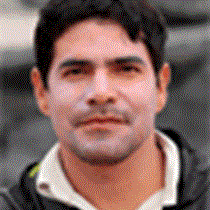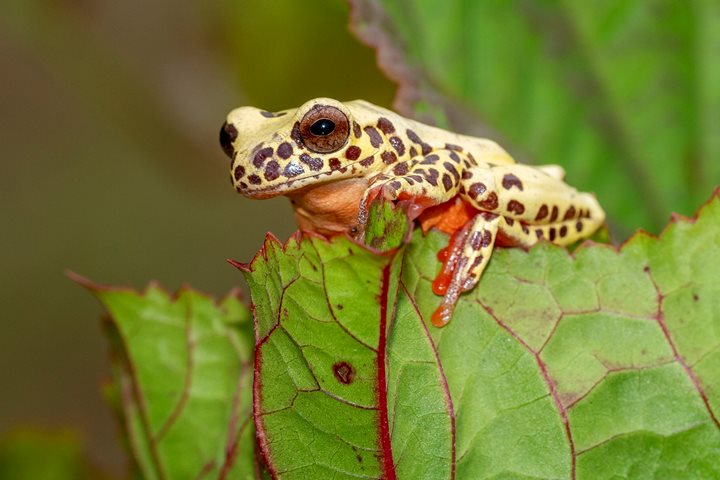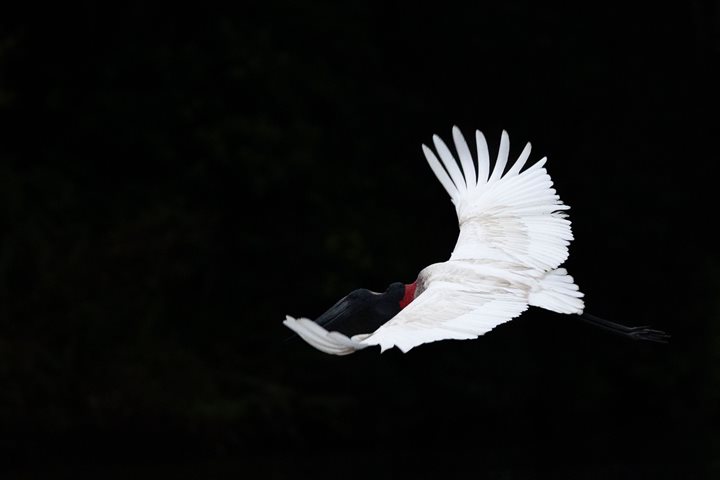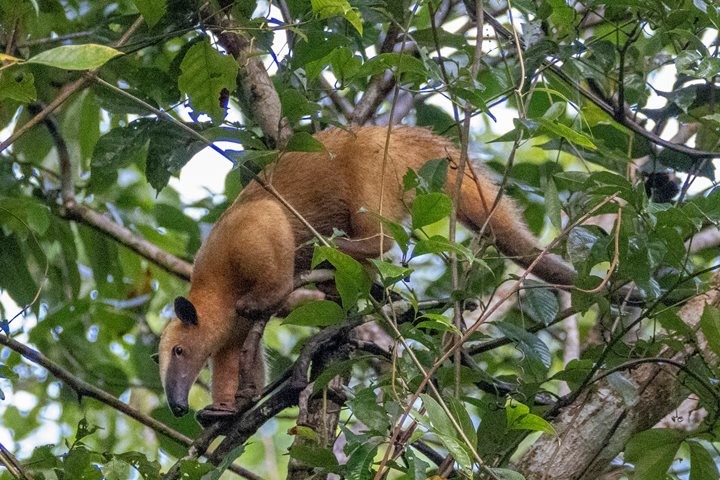It was very rainy last night, but I predicted that this morning was going to be sunny, and I was right, the day began with a very warm and spectacular sunrise. At 6:00 am, we took our skiffs out to explore the Ucayali riverbank, close to Belluda Creek. This spot is famous for macaws, which can be seen in the early morning, perching on the branches of dead trees, which are hollow and give a perfect refugee for these birds. As soon as we arrived, we saw many of the blue and yellow macaws preening themselves and warming up. Red-shouldered macaws were also spotted, and a couple of them were even mating. The morning was full of surprises; we spotted roadside hawks, laughing hawks, and couple of beautiful black-capped herons on the canopy. We didn’t even have to move very much, we simply found a small area where we parked our skiff and stayed quiet, then all of the wildlife came out right in front of our eyes. The early bird gets the worm and indeed, we did! We watched a red squirrel descending along the trunk of a thick tree, and behind it, some monkeys were scrambling through the trees looking for fruit. to complete our excellent excursion, at the end we saw few woodpeckers knocking the trees and drilling holes.
We returned to the Delfin II, and after breakfast we went out again to explore Belluda Creek, another great spot in the jungle. Here we saw many types of birds, including hawks, oropendolas, caciques and flycatchers. However, the highlight was definitely a flock of the quintessentially flashy tropical birds, known as Paradise tanagers, one of the most sought after by birdwatchers. We were also delighted to see a couple of monk saki monkeys, who watched us curiously from a high branch.
After this incredible morning, we had, we offered some activities on board, including lectures and videos, and today the galley team came to the main lounge to teach us how to cook and prepare a very delicious dish that is common in the jungle of Peru, and known as juanes. It is a kind of risotto cooked in bags made from local leaves, and boiled in water. Our captain motored for about four hours river up to reach el dorado, so we headed out around 4:30 to explore this magical place, where we intended to stay until 7pm, in order to see both the diurnal and nocturnal jungle wildlife.
When you visit the Amazon, it is mandatory to find one of the most representative birds, which is the hoatzin. They are known as “the prehistoric bird” because its claws, seen only in their babies, which they use to climb trees and survive before they can fly. Later on, as juveniles, they drop this tool, as they do not need it anymore.
At night many nighthawks and bats come out to feed on insects and other nocturnal creatures; caimans are seen everywhere and we found many of them tonight. It is so nice to see the afternoon, the dusk and the dark of the night, and how the colors, temperatures, density and weather change in just a few minutes. The adaptation of creatures at different scenarios is incredible, and the finding an ecological niche is vital to ensure the survival of their species. The stars appeared at the sky and on our way back, our crew was waiting to welcome us back. It was another great day in paradise!






